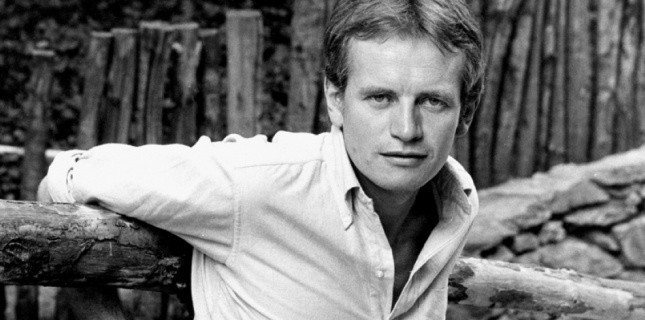The Disappearance of the Author

Alawiya Sobh’s 2002 novel, Maryam: Keeper of Stories, translated from the Arabic in 2016 by Nirvana Tanoukhi, details the lives of multiple women living in Beirut before and during the Lebanese Civil War. The titular Maryam narrates the majority of the tale, accompanied every now and then by the voices of her friends whose stories of romance, betrayal, sexual exploration, migration, and more come together in a stunning chronicle of feminine survival through the violence of war and patriarchy. Oftentimes even more perplexing than the obstacles her characters face, however, is the thrilling mystery that opens the novel: Alawiyya, the writer, has disappeared. None of her characters can find her, though they wait impatiently to read the stories they have shared with her, so Maryam steps in to deliver the tale while Alawiyya’s absence haunts the book. Insisting on the inconsistent, elusive nature of memory, Sobh’s characters reflect on the place of women’s tales in Lebanese culture, as well as the authority and responsibility of the writer. Through the perplexing enigma of the novel’s authorship, Sobh simultaneously brings to light and challenges the erasure of war and conflict.
The novel begins with the disappearance of the author. “The issue is over, as far as I’m concerned,” Maryam says in the first line, accepting Alawiyya’s absence and shouldering the burden of telling the stories Alawiyya had promised to write. Maryam tells us about her friendship with Alawiyya, the many women who they spoke to for the novel, and finally Zuhair, a playwright with whom Alawiyya had decided to write a dual project. She would write her novel and he would write a play with the same characters, based on the same stories—the primary difference, besides genre, being that she would start her “novel with a comma at the beginning and Zuhair will start his play with an ‘and.’” It is from within this framework of mirrored, slightly altered versions of stories that the reader adjusts to a novel narrated—or perhaps written—by one of its own characters who laments that she must take over for its missing author. Refusing to be limited by Alawiyya’s broken promise of a novel, Maryam writes, “I no longer need to read my life in her book, because my story ends here. I just want to find her to say goodbye, to tell her that I have chosen a path for myself outside her novel.” And yet this comes on only the second page of the book, as she begins to tell the stories that make up the rest of the novel. Deferral and displacement—of character, time, and truth—dominate the tale from its opening pages.
Through Maryam’s narration, Sobh writes the intricate, personal histories of various women, mainly focusing on Maryam and her friends Ibtisam and Yasmine, as well as a few others who divulged their tales to her. Many of these stories reveal the patriarchy under which the women both struggle and resist. Tuffaha, for example, follows her husband from Lebanon to Palestine to Brazil, where she must learn the Brazilian language quickly to support her sewing business. “I enrolled in a school and learnt to read and write Brazilian. But, to this day, I can’t write or read Arabic,” she says, revealing the ironic plight of many women who lack access to formal education in their homeland. Maryam’s mother becomes obsessed with the preservation of virginity until marriage, and keeps the sheets stained with blood from her daughters’ wedding nights in a cupboard, “just in case somebody ever decided to question a daughter’s purity. . .after we fled Burj Hammoud, Mother cried more over those ‘certificates’ than she did for the dozens of unused plates and glasses, blankets and mattresses that we left behind.” Other women, such as Suhaila, live through loveless or cruel marriages. Upon her husband’s retirement, she suddenly stops regarding her marriage happily or pretending it was a loving relationship, “not because her husband no longer made money but because he was about to stay home with her. . .His presence would force her to admit that her love story with him did not exist—never had existed. He would destroy what she spent a lifetime building.” Even Ibtisam, the daring revolutionary who does not abide by the social norms of expressing love before marriage later echoes the inescapable fate of women, telling Maryam that “women’s bodies move according to a clock whose time is ‘waiting’: waiting for her menstruation to begin, then waiting every month for the menstrual cycle to start, waiting for ovulation, waiting nine months to deliver, waiting for menopause. And every act of waiting, even the wait for death, is laden with pain, for pain is the tax of femininity.” Focused entirely on reproduction, the once-rebellious Ibtisam finds herself unable to break through the role society places on her body. To this, Maryam clarifies the thread that runs through all the women’s stories in the novel, asking of her society, “But what are we, women, really waiting for?”
Despite the heavy tradition and conservatism of their immediate society, the women all tell detailed stories of their sexual encounters. In her first chapter, Maryam writes that her “room was a shelter for [the women’s] stories and secrets. . .We needed to tell each other everything, even the most intimate of details. Each of us needed to tell our story in the presence of the rest, so we could be mirrors in which to discover their many faces of ours.” By sharing details about sex and pleasure, the women not only affirm each other’s existences but also challenge the view of women and sex as simply vessels for childbirth. Tuffaha, after being married to a Palestinian despite her love for a French soldier, discovers that her husband, who never completes intercourse with her, leaves the room to masturbate instead. So, she decides to learn to do this herself, and for ten years she does not let her husband come near her. Nabiha, who says the phrase “no meaning” after nearly any statement to absolve herself of any potential sexual implications without realizing that her constant repetition of “no meaning” becomes sexual to the men in her neighborhood, later sexually assaults Kameel, a boy who lives on the street and who is assaulted by others in the same way, highlighting the lack of consent in many sexual encounters. We learn of Maryam’s abortion after having sex with a man she didn’t love, and of Ibtisam’s ridicule when Kareem, her lover, makes fun of her for being a virgin despite her political views. “What’s with you, ya Kareem? What’s your point? I can’t be a virgin and a revolutionary?” she pushes back, encapsulating the double standards which the women face even from the supposedly progressive men.
Though the majority of these tales seem to be narrated by Maryam with the addition of occasional voices of other women, they are riddled with minor contradictions, tangents, and shifts in time, creating a complex structure rather than a straightforward account of a few women. Tanoukhi’s brief translator’s note touches on this, noting that there are “deliberate inconsistencies in the plot to make the stories seem jumbled, as if confused in many memories, as if they are not necessarily one person’s story.” Memory itself takes a prominent role throughout the narration as traumatic violence plagues many of the characters. Ibtisam sees two civilians taken out of their car and thrown over a bridge: “She kept going back and forth to the bathroom to vomit, as if she wanted to physically expel the image from her memory. But the scene never left her; instead, it endured—the corpses of the two men lay with her on her bed and the eyes of the militiamen glowed before her like burning coal, painted on the wall of the room.” The ruthlessness of war renders a fluidity to the experience of one’s own individuality. “A human forgets that he has been murdered, and so the murdered must learn how to become a murderer,” Sobh writes of the experience of losing oneself to constant death. She beautifully depicts this loss of self in Maryam’s mother, as “many things had been put to death inside Mother, and even so she tried to kill the rest in order to forget that she was alive.” Maryam reiterates her need to tell the stories she had dictated to Alawiyya, wishing that she “could find her now to recover all the stories and anecdotes, which she surely has forgotten. . .I must find them before I fly over the clouds, before the clouds of my memories turn to rain.” As the distinctions between characters and memories blur, the reader becomes increasingly aware of the burdens of collective trauma, seeing through scenes burnt into one person’s memory the haunting of an entire population.
This emphasis on the collectivity of the stories flourishes in the end of the novel, where the mystery of Alawiyya’s disappearance and the characters’ frustration with her failed promise pick up. Ibtisam had told Alawiyya “everything so my story would take on a life separate from me.” She recalls hearing Alawiyya reading the drafts of the stories aloud, and how “it would pain me to hear my story wander and become lost among a host of names.” To her insistence that Alawiyya rightfully name the stories as hers, Alawiyya responds, “But your story is not yours alone. I heard the same story from Huda, Jumana, Suaad, Samiha and many others whose names and faces I no longer remember.” Maryam faces the same erasure of her identity, asking herself if she is “the voice or the echo” of the stories she told to Alawiyya and which she redelivers in the novel. Alawiyya, the author, has one brief, singular appearance in the penultimate chapter of the novel as its narrator, in which Sobh brings the reader up to face even more impossible questions about the responsibility of the author, especially in the context of war and oppression. Alawiyya reveals her own frustration at the mass of women and stories she now finds indistinguishable, asking, “Who are they, all of them? How would I recognize them in the mysterious faces before me?” The reader learns slowly about a traumatic abortion that Maryam went through, which Alawiyya returns to in this section as she struggles to grasp at the borders between her characters: “I’m not certain whether the abortion was Maryam’s or Ibtisam’s, Yasmine’s or mine, or of other women and men in the war whom I’ve never known. All of us aborted fetuses and dreams and memories. The city aborted the city, the street aborted the street and the buildings aborted their walls. The villages aborted the villages, and humans aborted their lives. I aborted my hand, so I wouldn’t have to write.” Alawiyya succumbs to the burden of responsibly writing these stories, displacing herself as the narrator in one final, heartbreaking act.
As she finds her characters’ persistent search for her overwhelming and irritating, Alawiyya grapples with her frustration and fear of responsibility as the author. She imagines they are worried that they will be erased if she doesn’t write her novel, asking herself, “Could I have already killed them by committing them to a distant memory? It’s possible. And it’s possible too that I may have followed them myself to their deaths when I buried their memories.” Zuhair, her playwright counterpart, however, articulates a driving force that likely compelled Maryam to take up the tale, after Maryam tells him and Alawiyya about her abortion: “his reaction was simply to gather his papers and leave. ‘What business of mine are these women’s stories?’” In divulging the jointly remembered, often misidentified, stories of so many women, Sobh and her characters insist on the integral function of personal experiences to the narrative of the Lebanese Civil War. Sobh refuses to look away from what society casts aside as “women’s stories,” revealing the hypocrisy of such labeling by likening civil war to an abortion and inundating the reader with public trauma disguised as private memory. By displacing Alawiyya and haunting the narrative with the disappearance of authority and stability, Maryam: Keeper of Stories rejects the concept of a credible author and any hierarchy of people’s experiences, prioritizing instead a complex, flawed collectivity of voices.
photograph by Jonhy Blaze


